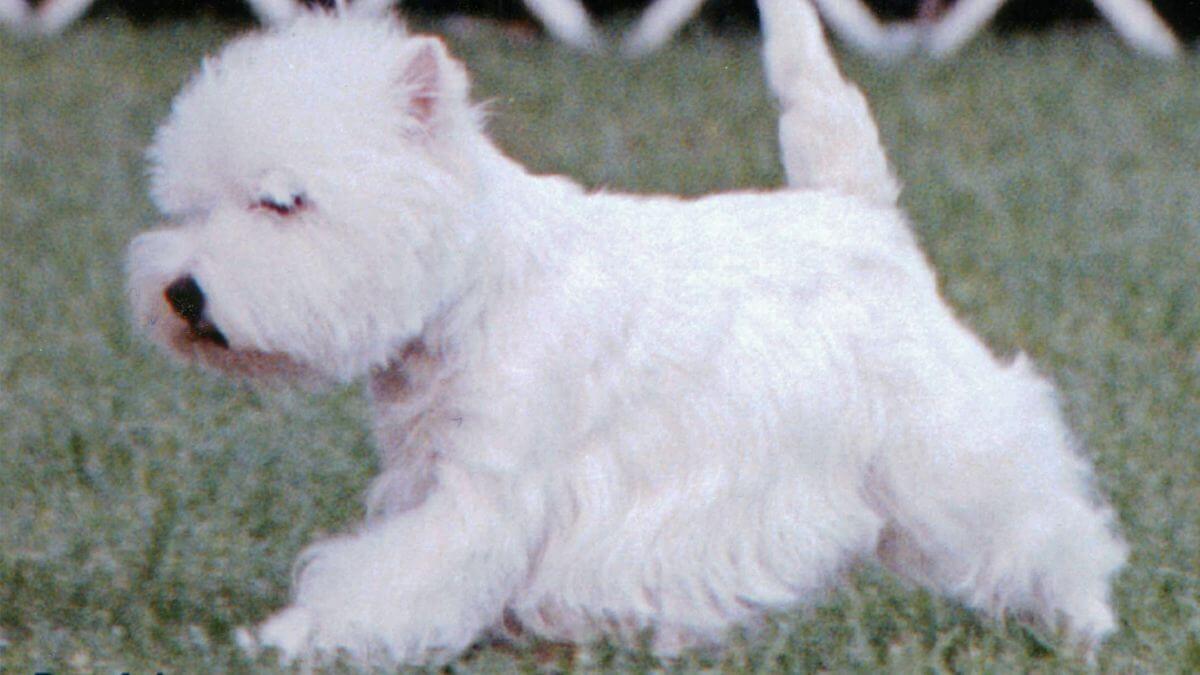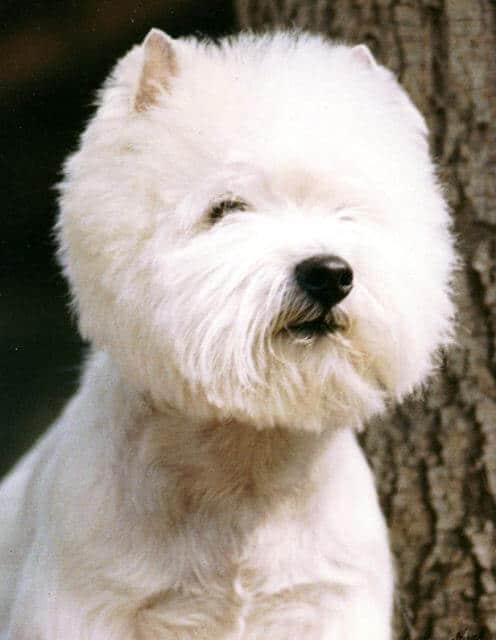


Home » West Highland White Terrier

This article was originally published in Showsight Magazine, October 2020 issue.
For those of you who have ever been owned by a Westie, you understand the curious, happy with an attitude, and sometimes stubborn nature of these marvelous creatures that let us inhabit their world. For those who have not had the pleasure, we hope to shed some light on some pertinent points of the breed. How the Westie came to be is an interesting legend. The short-legged Terriers of Scotland are now recognized as the Scottish, Skye, Cairn, Dandie Dinmont, and West Highland White Terriers. They all, undoubtedly, descend from the same roots. All of these dogs were valued as intrepid hunters of small game. Originally, their coat colors ranged from black to red to cream or white. Colonel Edward Donald Malcolm, of Poltalloch, Argyllshire, Scotland is generally credited with breeding the white dogs true, although he took none of the credit onto himself.
As the legend goes, a reddish dog of his, emerging from cover, was mistakenly shot as a fox. Malcolm is said to have decided on the spot to breed only for white dogs that could be readily identified in the field. The breed was listed officially as the West Highland White Terrier in 1907 at the Crufts dog show in England. The name was chosen for the rugged character of the dogs and the area of their development. The West Highland White Terrier Club of America was founded in 1909 and is a member club of the American Kennel Club. The Westie is described as hardy, game, and possessed of no small amount of self-esteem because of the work they do. They are small, well-balanced, and strongly built, deep in chest and back ribs. The ideal size for a bitch is 10 inches at the withers and 11 inches for a male, although a slight deviation is acceptable.

The body between the withers and the root of the tail is slightly shorter than the height at the withers. The distance from the point of shoulder to the elbow should measure approximately the same as the distance from the elbow to the foot, all coming together to portray the balance as required in the standard. Their neck is moderate in length, muscular, and well-set on sloping shoulders, which blend into a level topline both standing and moving. Their body is compact, and of good bone and substance. Ribs are deep and well-arched, forming a heart shape, and extend at least to the elbows. Shoulder blades are well laid back and well-knit at the backbone with an upper arm of moderate length, preferably close to equal in length of the blade it is attached to. Front legs are reasonably straight and are set in under the shoulder blades with definite body overhang. Thighs are muscular and well-angulated, not set apart, with hock well bent, short, and parallel to the ground. Their head should be of good bone with dark almond-shaped eyes widely set apart that give a piercing expression.

The skull is broad and slightly domed with a defined stop. Muzzle is blunt, powerful, and slightly shorter than the skull, with teeth that are large in size for the dog. Scissors or level bites are equally acceptable. An occasional missing premolar is acceptable. (A note should be made here to current or future judges that missing premolars should not be a disqualifier.) If built correctly, the Westie’s gait should be straight, free and easy, and powerful, with reach and drive, which is best evaluated from the side; all the while the topline remaining level. Following the theory of form following function, of particular interest is the movement of the Westie which, when free and easy, enables the dogs to reach their prey without tiring. One of the perks of being asked to write an article is being able to expound on some personal observations and opinions. While giving a recent AKC webinar on the Westie there appeared to be some confusion on the concept of “overhang.” Overhang is created when the Westies’ legs are well-set under them instead of being set too far forward on the body.

In our opinion, lack of overhang or forechest is a trend we are seeing in the ring today. Westies are not supposed to have what is commonly known as a “Terrier front” as displayed on the Fox Terrier. The overhang is created by proper length of upper arm and legs set well under the body, which is needed to perform the free and easy gait as talked about in our standard. Why is this important? If you go back to the premise that the purpose of dog shows is the evaluation of breeding stock, then these trends that appear in the show ring can be a detriment to the breed going forward, should these attributes be rewarded. Preservation breeders have the duty to ensure the strength and vitality of our beloved breed for generations to come. Breeders adhering to our standard—and judges rewarding dogs that exhibit those characteristics—are the blueprints that will ensure that the dogs of the future will most closely match the ideal Westie that is described in the standard.
